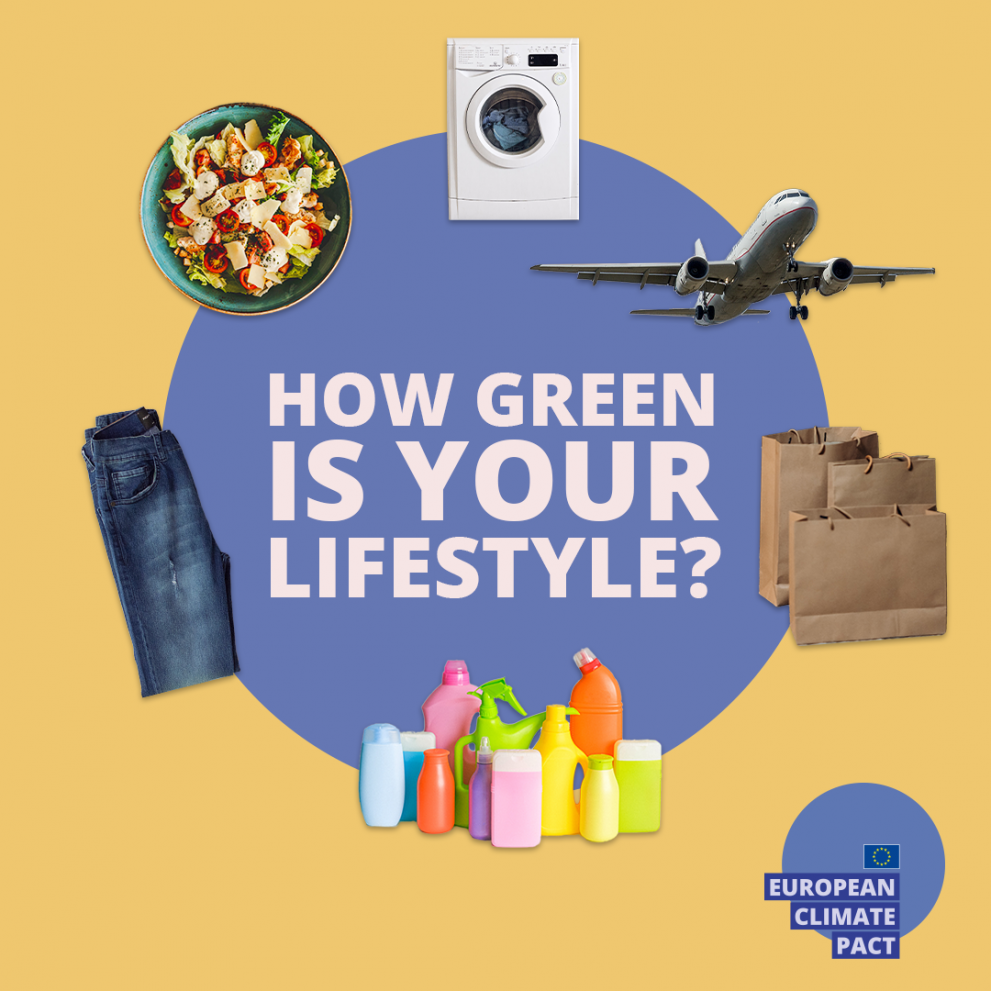
Making a difference in the fight against climate change can only be achieved if we all take steps to decarbonise our lifestyles. But what does that mean in practice and what kind of impact does it make? Which areas of our lives are having a minimal effect on the climate, and where are our weak points? And, crucially, what are the next steps we can take to continue reducing our carbon footprint?
The good news is that there is a way to answer these questions – and it’s easier than you might think thanks to the The Consumer Footprint Calculator (CFC)!
Let’s start at the beginning. What is my carbon footprint?
The concept of a ‘carbon footprint’ was developed in the 1990s and is now widely used to quantify the climate impact of an activity, person or country. By measuring our carbon footprint and identifying where we can make meaningful changes to our lifestyles, we can help contribute to an overall reduction of CO2 emissions.
So, how do you accurately measure your carbon footprint? Although there are plenty of tools available online, many use limited metrics that only take into account specific parts of your lifestyle. As a result, it’s difficult to gain a holistic and accurate snapshot of your complete carbon footprint.
Luckily, the Joint Research Centre (JRC), the European Commission’s science and knowledge service, recently unveiled The Consumer Footprint Calculator (CFC) – and it could provide the solution.
What is the Consumer Footprint Calculator and how does it work?
The JRC’s Consumer Footprint Calculator is a tool that takes into account the environmental impact of your entire lifestyle and all of your consumption habits. It draws on ten years of JRC scientific research, and, as a result, provides a thorough and science-based glimpse into the environmental impact of your consumption patterns.
“Allowing consumers to evaluate the climate and environmental impact of their own behaviour is so important,” says Serenella Sala, Scientific Project Manager at the JRC, who developed the tool. “It increases the awareness of the issue and helps identify the parts of their lifestyle that can be improved to move towards more sustainable ways of living.”
The CFC considers five areas of individual and household consumption: food, mobility, housing, household appliances, and household goods – but it goes beyond just calculating greenhouse gas emissions. It also looks at 16 different ways that products that we use on a regular basis can have an environmental impact, such as how we directly consume them, but also the impact of the land and water used to produce them – among other things.
“The calculator offers a higher level of accuracy compared to other calculators by compiling detailed information on consumption patterns and behaviours in the questionnaire, analysing the impact of the entire life cycle of a product, and employing the Environmental Footprint method,” says Serenella. The Environmental Footprint method provides a detailed set of rules which allows companies, organisations and governments to measure the entire lifecycle of a product in a harmonised and meaningful way.
Calculate your impact
It takes around 15 minutes to calculate your carbon footprint using the JRC tool, during which you will be asked to answer a series of questions for it to compile the data points it needs to generate your score. Before you start, you’ll need to have a rough idea of how much energy your home consumes, how much water you use on average, and where your electricity and heating comes from. All of this information is then aggregated into a single score, after which you can explore the impact of your lifestyle against the limits of what our planet can provide, as well as against the UN’s Sustainable Development Goals and the consumption habits of the average EU citizen.
Curious to find out your score? Take the test here.
Got your results? Now look at where your strengths and weaknesses are and identify where you can reduce your personal carbon footprint. You can take steps including:
- Switching to a renewable energy provider
- Buying seasonal and local food
- Reducing your reliance on your car
- Taking fewer flights each year
- Repairing your old clothes or buying second hand
Calculating our carbon footprint is the first step to reducing it, argues Serenella: “With the Intergovernmental Panel on Climate Change (IPCC) and the Intergovernmental Science-Policy Platform on Biodiversity and Ecosystem Services (IPBES) highlighting the need to reduce our environmental impact, making changes to our lifestyles is of the utmost importance to be able to reduce the increasing impact of consumption.”
“The calculator provides tips for each of the five areas of consumption,” explains Serenella. By focusing on small steps, you can make a gradual, but sustainable reduction to your carbon footprint.
Moreover, many of the lifestyle changes suggested by the calculator will improve your health and bring other benefits to society. For example, using the car less and walking or cycling more will not only reduce CO2 emissions, it will improve your fitness and reduce air pollution in cities. A win-win for everyone!
Inspired to drive down your score? Here’s what you can do next
Why not make a pledge with the European Climate Pact and our partner Count Us In? Take a look at the pledges you can commit to and make that lifestyle change official! Encourage others to do the same and share your progress on social media using the hashtag #EUClimatePact.
It’s crucial to be vocal about this issue to motivate others, so share your footprint result with friends and family, whether that’s on social media, by email, or by word of mouth. Talking to others about your experiences and discussing what changes you are making to your lifestyle can help to inspire them to calculate their own footprint and make greener choices. You can help spark a wave of action!
Details
- Publication date
- 31 May 2022
